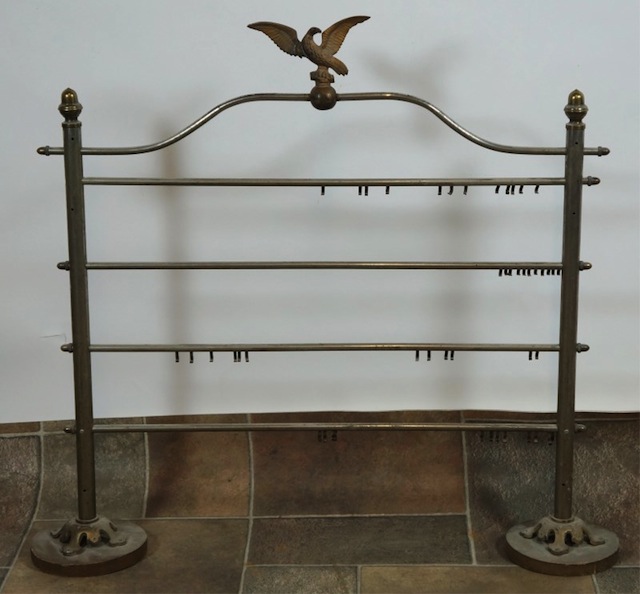
| WWT Shows | CLICK TO: Join and Support Internet Horology Club 185™ | IHC185™ Forums |

|
• Check Out Our... • • TWO Book Offer! • |
Welcome Aboard IHC185™  Internet Horology Club 185
Internet Horology Club 185  IHC185™ Discussion Site Main Page
IHC185™ Discussion Site Main Page  Our Exclusive "Timekeepers Photo Gallery"
Our Exclusive "Timekeepers Photo Gallery"  IHC185™ "Timekeepers Photo Gallery"
IHC185™ "Timekeepers Photo Gallery"  A jewel in the rough
A jewel in the rough
 Internet Horology Club 185
Internet Horology Club 185  IHC185™ Discussion Site Main Page
IHC185™ Discussion Site Main Page  Our Exclusive "Timekeepers Photo Gallery"
Our Exclusive "Timekeepers Photo Gallery"  IHC185™ "Timekeepers Photo Gallery"
IHC185™ "Timekeepers Photo Gallery"  A jewel in the rough
A jewel in the roughGo  | New Topic  | Find-Or-Search  | Notify  | Tools  | Reply to Post  |  |
| Railway Historian IHC Life Member Site Moderator |
J.H. Purdy & Co., Chicago 1899 HANDSOME NICKEL PLATED RACKS. No Solder Used or Wooden Plugs. Heavily Nickel Plated, Fine Polished Brass Trimmings. Rack for 50 Watches $3.60 Right Sidebar reads: "The Rack for 40 Watches is made like Rack for 50 Watches, but has no Eagle or bow. Price $2.80 $3.60 converts to about $120 today, But how many have survived. It says that the rack holds 50 pocket watches, I don't know where that number came from, there is only room for 48 pocket watches. 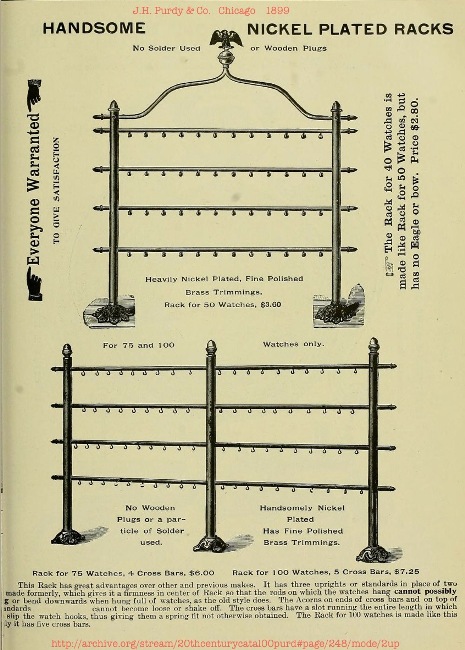 | |||
| Railway Historian IHC Life Member Site Moderator |
RESTORATION With help from my caregiver, Helen We disassembled, and cleaned all the nickel and brass, a clockmaker friend of mine, Trevor Beatson was able to turn me the missing brass finial from the top left pocket watch support bar. Although we were careful unscrewing the gilded cast-iron support feet, one of them broke off, as you can see by the pictures. This had happened a few times during the life of this pocket watch rack 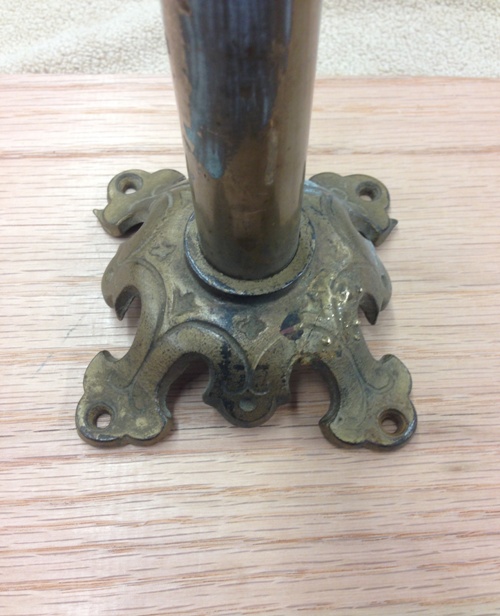 | |||
| Railway Historian IHC Life Member Site Moderator |
The broken foot 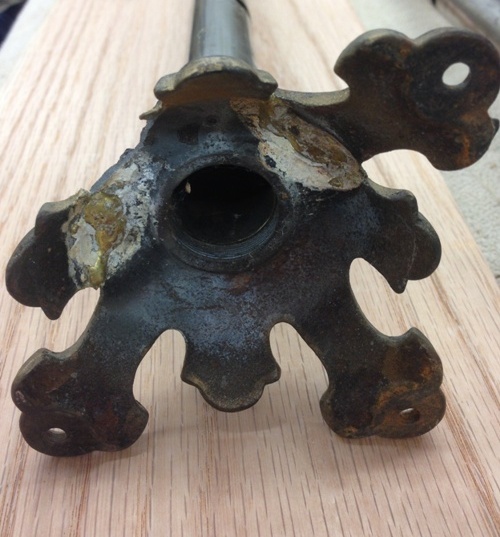 | |||
| Railway Historian IHC Life Member Site Moderator |
Photo of the good foot showing previous repairs 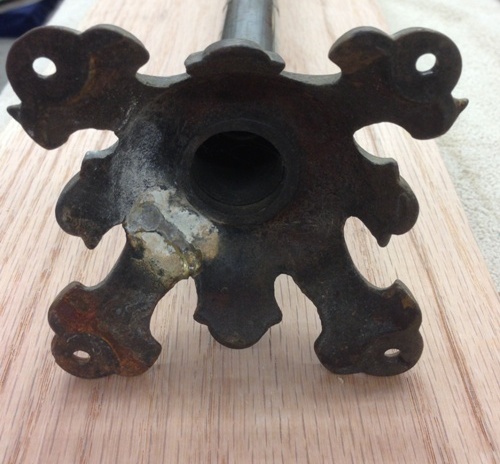 | |||
| Railway Historian IHC Life Member Site Moderator |
While Helen was busy polishing and painting the feet, and gilded eagle, my other caregiver, Christopher helped me make a new oak base, with this finished. The project was starting to look pretty good. 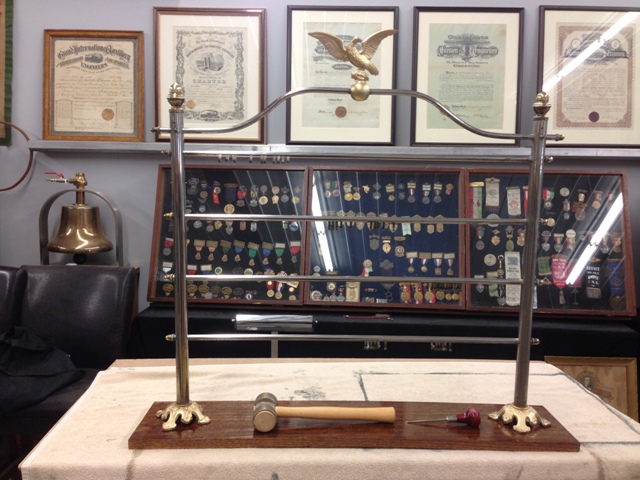 | |||
| Railway Historian IHC Life Member Site Moderator |
Helen was able make three new hooks from a kit of brass picture hangers,the other 45 were ultrasonically cleaned and painted. We picked out 48 18 size pocket watches, and this is the finished result. 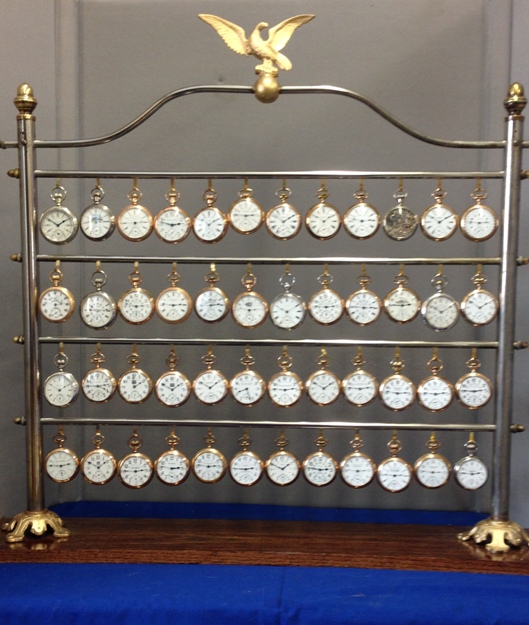 | |||
| Railway Historian IHC Life Member Site Moderator |
The top row are from the American Waltham watch Co.  | |||
| Railway Historian IHC Life Member Site Moderator |
And the second level are from the Elgin National Watch Co. 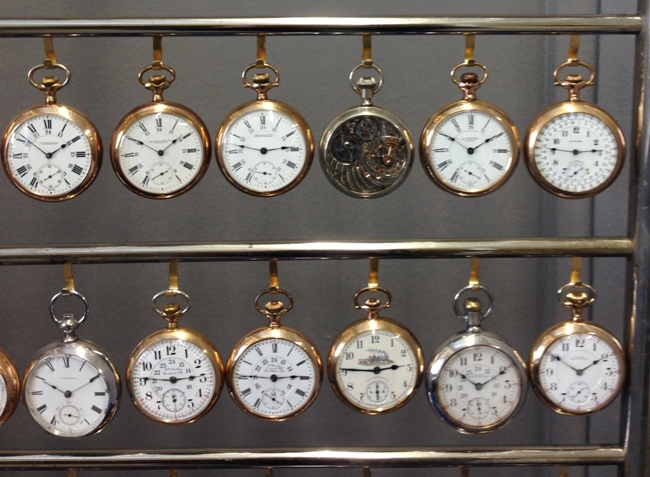 | |||
| Railway Historian IHC Life Member Site Moderator |
Level 3 is pocket watches from the Hamilton Watch Co., of Lancaster, Pennsylvania 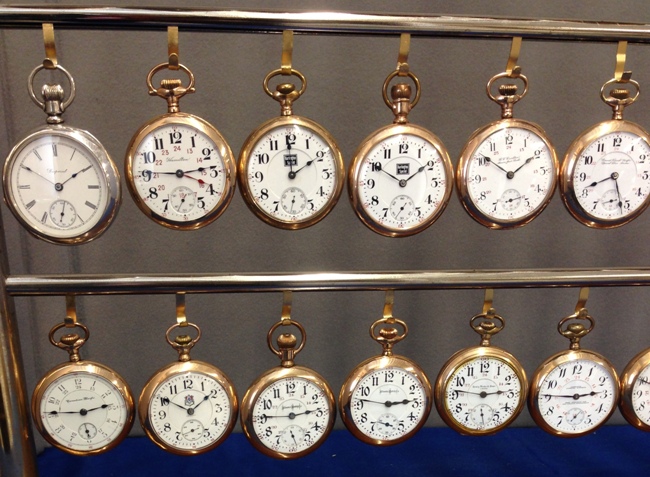 | |||
| Railway Historian IHC Life Member Site Moderator |
Finally on the fourth tier we find 2 Hampden's 3 Illinois, 2 Longines, 1 Louis Brandt (Omega) 2 Rockford's and 2 Southbend's 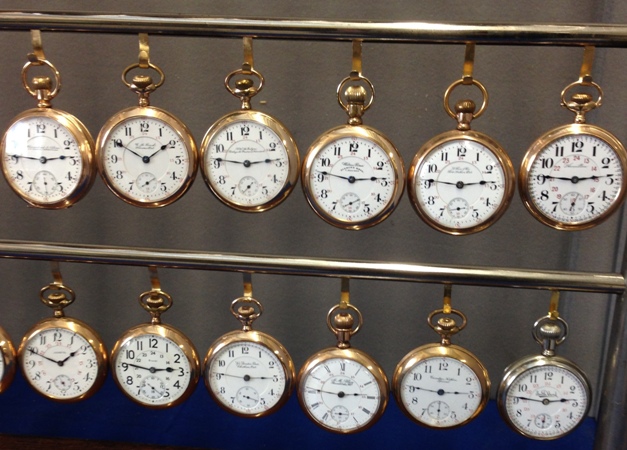 | |||
| IHC Member 1892 |
Beautiful job with the restoration Larry, it really looks nice. Funny thing, I was looking at that catalog last evening and thought it would be pretty cool to have one of those. Yours is the first I have ever seen. | |||
| IHC Life Member |
Larry, That's just awesome! I wouldn't mind having one myself ....I only need about 44 more watches! William | |||
A very nice and unique display rack Larry! Great job on the refinishing and repair. | ||||
| IHC Member 1541 |
Nice job Larry! It must be great to be able to have a bunch set up right in front of you. I do know of another identical stand coming up soon should anyone be interested. I just had a look and at least one of the feet is missing and none of the hooks are there. Larry, would it be practical to make the hooks from brass stock? | |||
| Railway Historian IHC Life Member Site Moderator |
Hello Lorne: What I used, as I only needed three, was the picture hanging hooks that come in kits, with a pair of pliers they were easy to modify for this purpose. But to make 48 of them, it would probably be easier to use a sheet of brass, cut into thin strips, and makeup a jig to form them. I will take a photo of one later on and email it to you. Larry | |||
absolutely beautiful Larry. i am impressed daily by the skills of this clubs members and their dedication to preserving horological history. Todd | ||||
Very nice Larry, very unique item, museum quality. Impressive sight to see. | ||||
What an outstanding display! Thank you for sharing! I will show this to my wife to justify purchasing 40 more watches. | ||||
Outstanding Larry! A thing of beauty to behold ... count me amoung the jealous and drooling Kindest regards, Serge | ||||
| IHC Member 2030 |
Mr. Larry Buchan Your display is deserved and appreciated. What is going on with the bell and medals? Can you please share a look into your collections? Thanks Mike | |||
| Railway Historian IHC Life Member Site Moderator |
Thank you, everybody for your kind comments, in answer to what is behind the watchmakers stand, here is a description and some photos. The Bell visible to the left of the photo of my watch stand comes out for a CPR RDC (Rail Diesel Car), these were built by the Budd Company of Philadelphia, between 1940 and 1962 398 were manufactured. They were used by many railways in North America, and were primarily used for branch line, and short-haul commuter service. They were less expensive to operate than a conventional diesel locomotive and coaches, as they could be run with one engineer and one conductor. A conventional train would have a fireman and a brakeman. They were called Dayliners the CPR used many of them in passenger service between Calgary and Lethbridge to the South, and from Calgary to Edmonton the provincial capital in the North. They were also used in the Maritime Provinces, and on Vancouver Island. They could be used singly or with several coupled together and controlled by the locomotive engineer in the front seat. They were constructed of stainless steel, they were propelled by two underslung General Motors 110 550 horsepower diesels, with four speed hydraulic torque converters. I had the opportunity to run them between Calgary and Edmonton and on straight tangent track was capable of speeds of over 100 mph easily. Photo of my first solo trip to South Edmonton on No. 195 Saturday, February 16, 1980. I had arrived 10 minutes late when I took this photo, you can see my overnight bag on the platform. 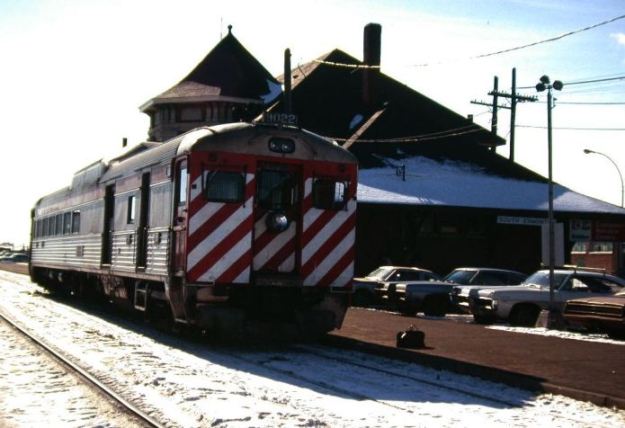 | |||
| Powered by Social Strata | Page 1 2 3 4 |
| Your request is being processed... |
|
©2002-2025 Internet Horology Club 185™ - Lindell V. Riddle President - All Rights Reserved Worldwide


